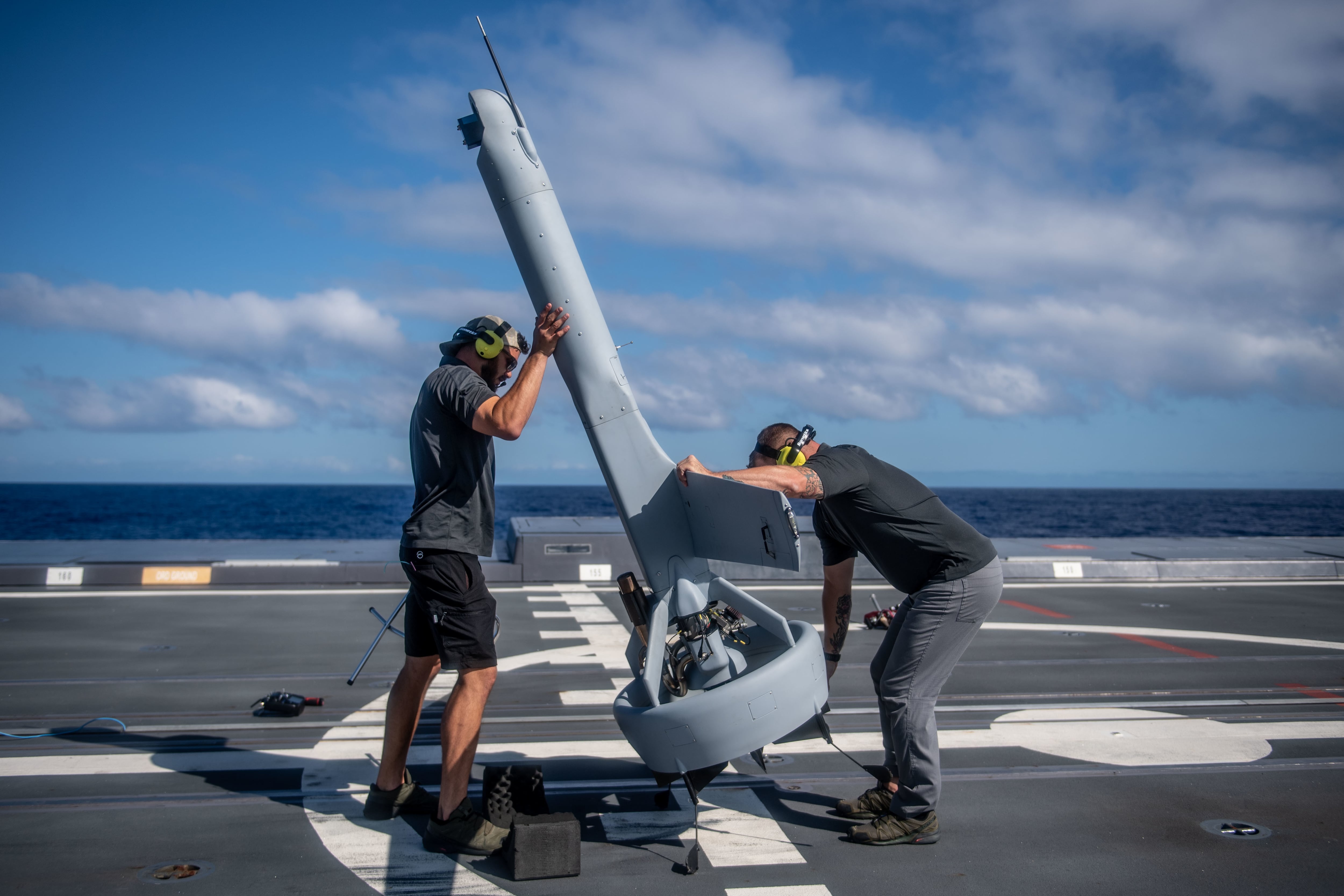NATIONAL HARBOR, Md. — Shield AI in the next year plans to have its Hivemind digital pilot working aboard three additional types of aircraft, bringing the total to nine.
The California-based company has already folded the autonomous flight software into three classes of quadcopters, its own V-Bat drone, the F-16 fighter jet and the Kratos-made MQM-178 Firejet drone.
Up next are two more Kratos products, the XQ-58 and BQM-177, according to Brandon Tseng, the president of Shield AI. The firm has not picked a third candidate.
“We want to put our AI pilot on every aircraft under the sun. The V-Bat is fantastic for what it does, but we also recognize we’re not going to build every single aircraft,” Tseng told C4ISRNET on April 8 at the Navy League’s Sea-Air-Space conference. “We’ll work with any original equipment manufacturer who wants to play ball.”
The U.S. Defense Department is increasingly interested in the confluence of artificial intelligence and unmanned technologies. Autonomous drones and machinery with control beamed in from afar can explore places deemed too dangerous for troops, assist with targeting, and introduce additional firepower.
The department in fiscal 2025 sought $1.8 billion for AI — the same amount as the year prior. It also recently launched the Replicator initiative, which seeks to deploy thousands of attritable systems to counter the perceived mass of China.
Hivemind’s ability to integrate with different aircraft is the result of Shield AI’s “software infrastructure, design tools and pipelines,” Tseng said, describing it as the “secret sauce.”
“Google has invested billions of dollars into the Android operating system. Tesla has invested billions of dollars into Tesla’s self-driving, which they’re putting on car to car to car to car,” he added. “We’ve invested a lot into a software ecosystem, where we can quickly put it on aircraft to aircraft to aircraft.”
Colin Demarest was a reporter at C4ISRNET, where he covered military networks, cyber and IT. Colin had previously covered the Department of Energy and its National Nuclear Security Administration — namely Cold War cleanup and nuclear weapons development — for a daily newspaper in South Carolina. Colin is also an award-winning photographer.







